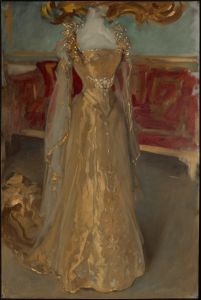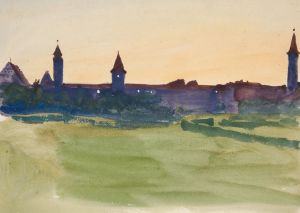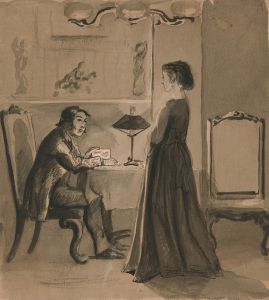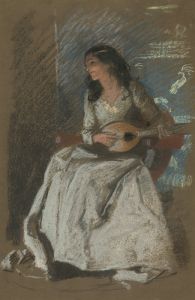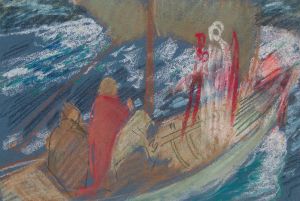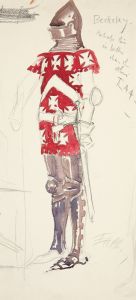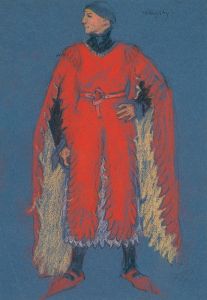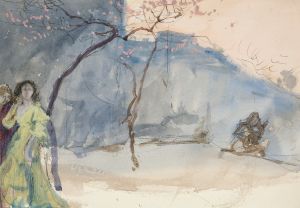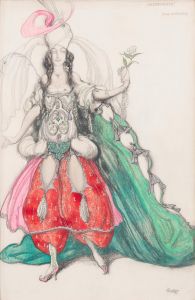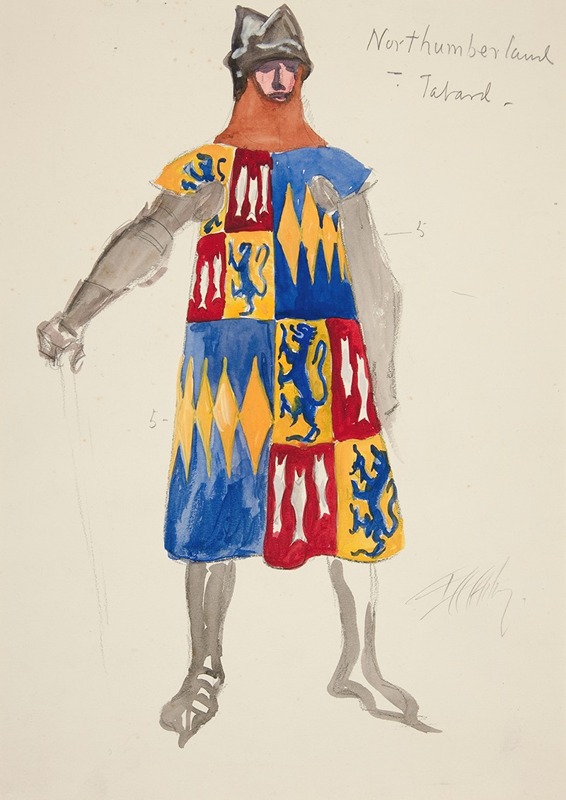
Northumberland – Tabard, costume sketch for Henry Irving’s Planned Production of King Richard II
A hand-painted replica of Edwin Austin Abbey’s masterpiece Northumberland – Tabard, costume sketch for Henry Irving’s Planned Production of King Richard II, meticulously crafted by professional artists to capture the true essence of the original. Each piece is created with museum-quality canvas and rare mineral pigments, carefully painted by experienced artists with delicate brushstrokes and rich, layered colors to perfectly recreate the texture of the original artwork. Unlike machine-printed reproductions, this hand-painted version brings the painting to life, infused with the artist’s emotions and skill in every stroke. Whether for personal collection or home decoration, it instantly elevates the artistic atmosphere of any space.
Edwin Austin Abbey's costume sketch, "Northumberland – Tabard, costume sketch for Henry Irving’s Planned Production of King Richard II," is a notable piece of theatrical art from the late 19th century. Abbey, an American artist known for his illustrations and paintings, created this work as part of a series of costume designs for a proposed production of William Shakespeare's "King Richard II" by the renowned English actor-manager Henry Irving.
Edwin Austin Abbey was born in 1852 in Philadelphia, Pennsylvania, and gained recognition for his illustrations in magazines such as Harper's Weekly. He later moved to England, where he became associated with the Pre-Raphaelite Brotherhood and developed a reputation for his historical and literary subjects. Abbey's work is characterized by its attention to detail and historical accuracy, which made him a fitting choice for designing costumes for Shakespearean plays.
Henry Irving, one of the most famous actors and theatre managers of the Victorian era, had a significant impact on the development of modern theatre. Known for his innovative productions and dedication to the art of acting, Irving was the first actor to be knighted, in 1895. His interest in producing "King Richard II" was part of his broader ambition to stage all of Shakespeare's plays with a high degree of authenticity and artistic merit.
The costume sketch for Northumberland, a character in "King Richard II," reflects Abbey's meticulous approach to historical costume design. The tabard, a sleeveless garment worn over armor, is depicted with intricate patterns and heraldic symbols, indicative of the character's noble status. Abbey's design would have been intended to convey the historical period of the play, set in the late 14th century, while also aligning with the aesthetic expectations of Irving's productions.
Although Irving's production of "King Richard II" was planned, it ultimately never came to fruition. Despite this, Abbey's costume sketches remain valuable as examples of theatrical design and as historical documents that provide insight into the collaborative efforts between artists and theatre practitioners of the time. Abbey's work on this project exemplifies the intersection of visual art and theatre, highlighting the importance of costume design in creating a believable and immersive stage experience.
Abbey continued to work on various artistic projects throughout his career, including murals and other illustrations. His contributions to the arts were recognized in both the United States and the United Kingdom, and he was elected to the Royal Academy of Arts in London. Abbey passed away in 1911, leaving behind a legacy of work that continues to be appreciated for its artistic and historical significance.
In summary, Edwin Austin Abbey's costume sketch for Northumberland in Henry Irving's planned production of "King Richard II" is a testament to the collaborative spirit of theatre and the dedication to historical authenticity in the arts during the late 19th century. Abbey's detailed and historically informed designs reflect the broader cultural and artistic movements of the time, and his work remains an important part of the history of theatrical design.





